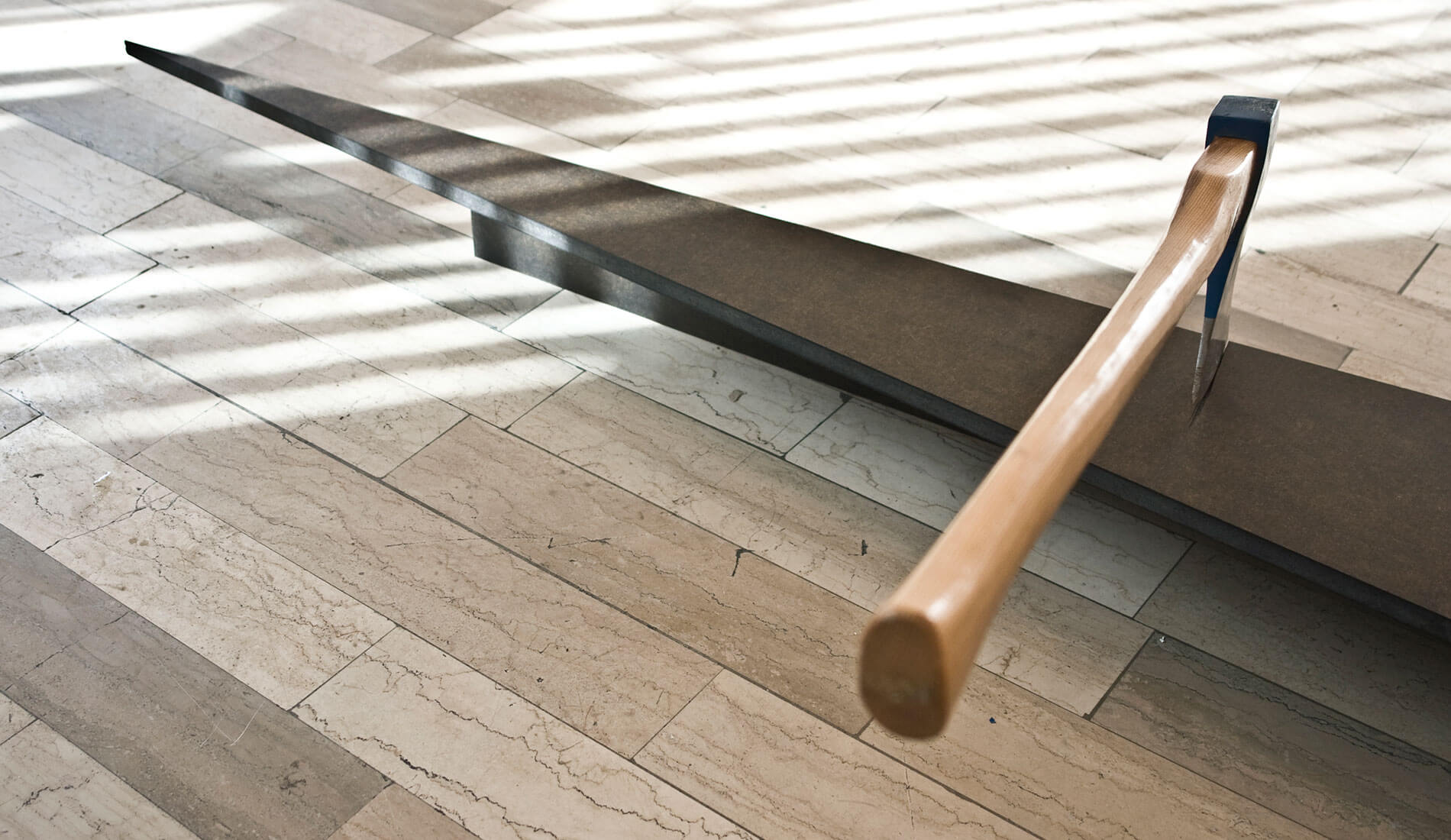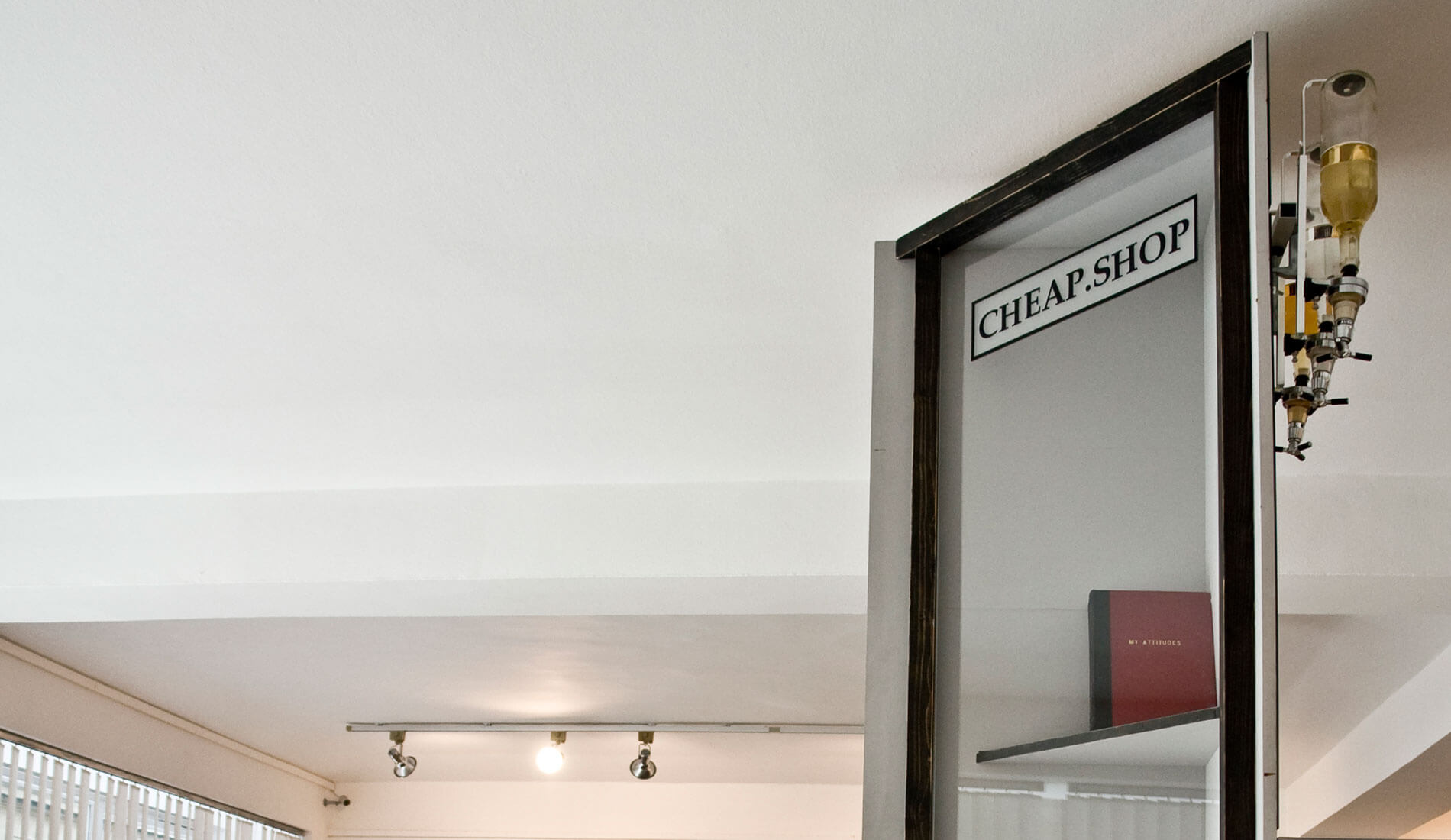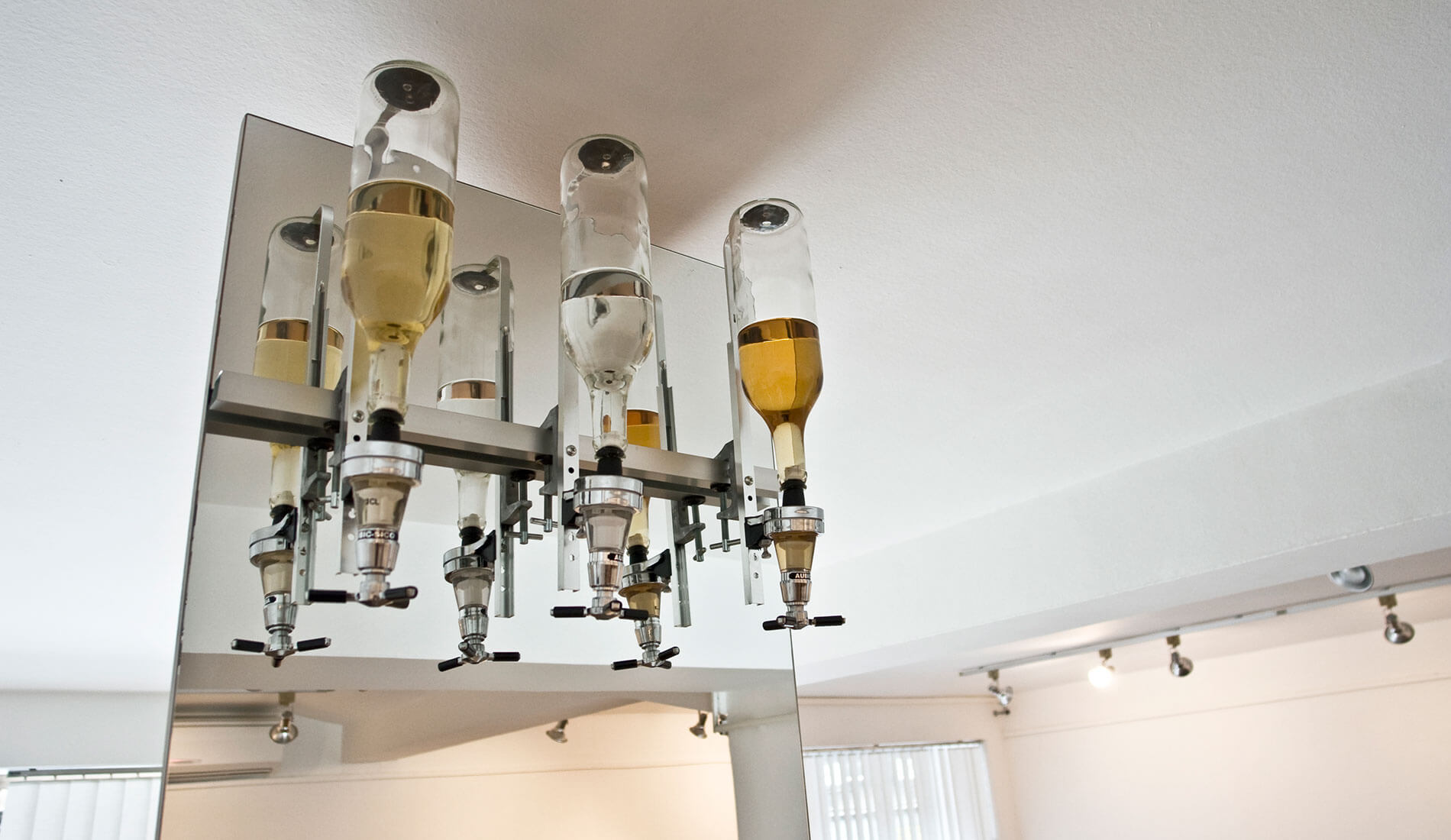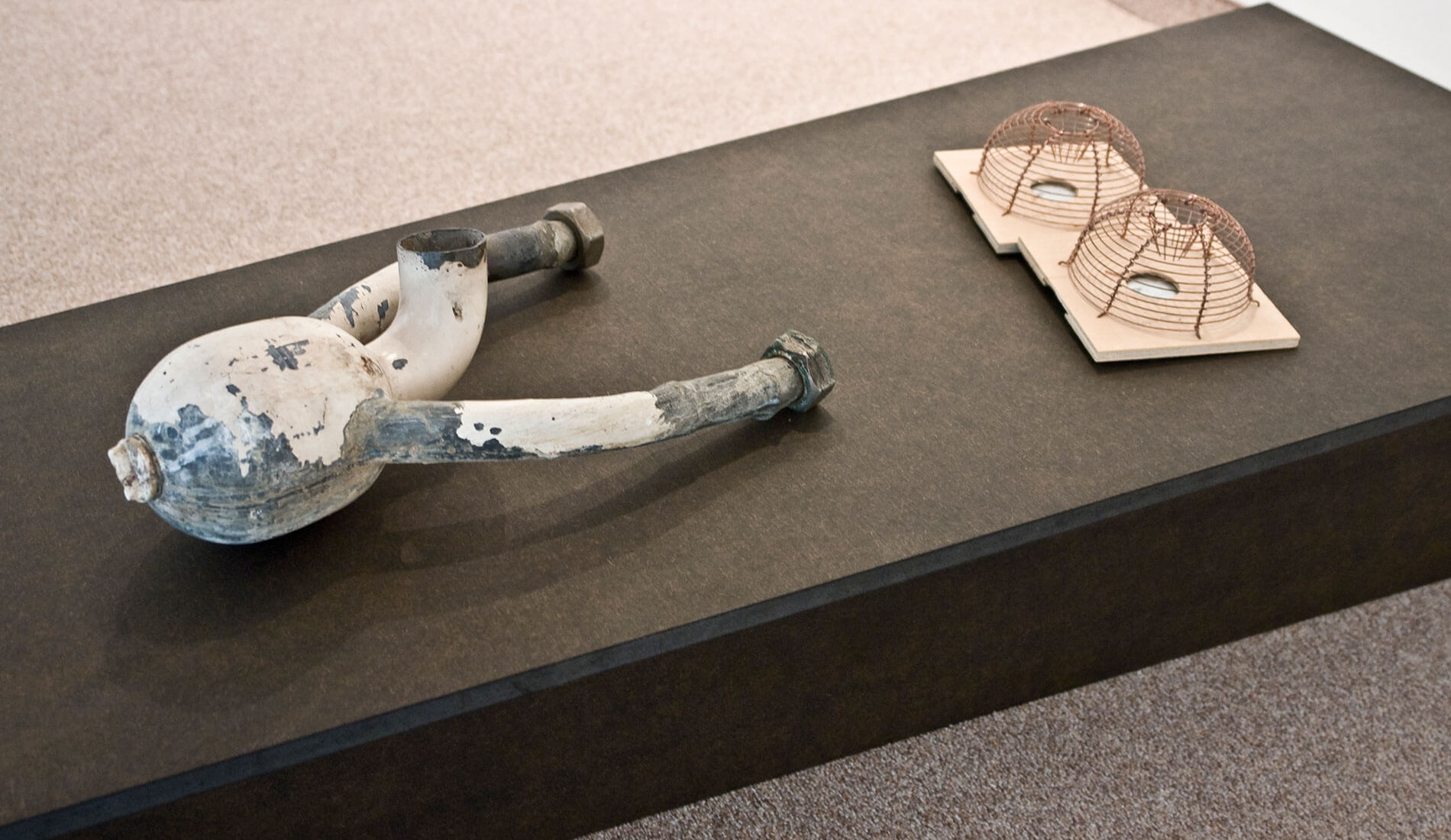

About a year and a half have passed since the first encounter of artist, of curator who supports his work and of art critic that supports the curator, the purpose of which was to put on an exhibition of this artist in one of the finest small exhibition venues in the centre of Zagreb - the Forum Gallery with its distinctive large window and first floor gallery. The name of exhibition - Retrospective of Davor Preis - derives from the author’s own ironical considerations about the general purpose of the “retrospective”. Today we perceive him as a well-reputed representative of the middle-to-young generation, but with a new name: Daworp Earthman. This is in fact his pseudonym, his second name, position and role at a decent distance between rock and hard place, developed ego and alter ego, there for the sake of crystallizing out the artistic treatment of the level of his own existence, hereby symbolically indicated, and the not entirely clear contemporary spirit - immersed in the now already technologically formed and globalised world - which is for the occasion here visualized and materialized. With a good deal of caffeine, cigarette smoke and verbal interactions, the exhibition was brought to the level of accomplishment. This is that simple truth of Eco’s, the criterion of morality, from the humoresque sketch How to Present an Exhibition Catalogue. The rest is a matter of point of view, of the interpretation of the interpreter in a world of art that - because of its omnipresence and because of its hermeticness - has already lost a good deal of its ability to communicate. The procedure is set up, the cards are dealt out; then comes the vernissage, the reaction of the general public and those in the know.
When seven years ago, the Preis of that time, out of inner necessity and the desire creation, entered the world of contemporary art as outsider, adding one more to the whole array of roles that he carries out in everyday life, none of the reviewers knew anything of him. Today the situation is much more favorable. Many people outside art circles have become acquainted with the Zagreb planetary system around the Kožarić Grounded Sun by the same author. In each one of his projects to date (for example, Landscapers, 2001, What can man do with one finger, 2002. and the Zagreb urban installation Nine Views 2004) he actively included in the final performance the actual exhibition venue. Whether, as is here the case, the interior of the white cube, or the ambience of the city. What is more, now the exhibition space, with respect to the minimalist conception of the exhibits, is partially empty, or voided like the ether that links objects, but it is still dominant and active. Recapitulating Preis’s persona and work, Earthman, in the role of artist/curator exhibits and critically comments on the collector’s passion for the ordinary objects of his antecedents, his obsession with the ready-made. This is nothing new. Contemporary world art (60-65%) is suffused with the spirit of its creator, and many theorists of modern art, like Michaud, agree that with his writ, tricks and spirit of revolt, Duchamp produced the Pandora’s box that in today’s global, cacophonic industry of visual culture in various versions we are all trying out. But apart from the already generally known change of the natural context of the use object by its being shifted into a consecrated space, in this given installation there is an also allusive and symbolic component along the sign-significance axis. In Cities and Signs Italo Calvino poetically describes the essence of indirect communication: “Everything else is dump and mutually interchangeable; wood and stone are though only what they are… The eye does not see things but the pictures of things that represent others; the pincers suggest the dentist’s chair, the tankard the pub, the sharp shooter the guard tower, the scales the market woman…” It is similar way that Earthman in the set-up of the exhibition treats the use objects exhibited. They are looked at from very much of a guy’s view and represent a bit more than what we see in them at first view. A number of critical relations are developed, placed on black panted, geometrically shaped objects or pedestals: attitudes to woman as mother/harlot, to everyday work, then to the creative impulse and a career in business, to exhibitions, particularly to personal propensities and cleavages. In contrast to the sterile white of the gallery space, the striking and sparse blackness of these forms gives the eye a visual break from, censoring out, the mass of details, directing the gaze to the sign itself and elevating these found consumed items of civilization to the level of objects placed on a sacrificial or post-industrial altar. In very simple compositions on a low coffin-style surface, female attributes are arrayed. A used piece of plumbing equipment and two wire mousetraps signify woman as mother/bearer of life, and a wooden box with food and a glass vessel for drink and a cage full of worthless coins are the semantic opposite - the harlot. This is a rather radical experience of woman. Then the axe fixed into a gash in wood or a hammer on an anvil represent the potent male work-and-warfare social function, and the golf club and football are the opposed elite vis-à-vis popular forms of fun and leisure activity. The climax of the exhibition is a tall, monolithic, three-sided prism that like some kind of totem rises from the ground floor to the ceiling of the gallery and in terms of form and content links all the elements seen previously through three forms of male success and impossible aspirations. In Cheapshop they are decorated with things arrayed in comparative and contrasting triads: medals, alcohol and books, or the bound biography, works views of the author. On one side of the prism the potential viewer is mirrored in front of variously colored beverages. Sadness? We can interpret this as a sequence of psychological and social relations characteristic of the time and space in which we live, as well as a search for individuality and awareness of the complex mechanisms that set us in motion, shown here entirely symbolically. On the one hand the artist is dead, on the other, vive the artist.
Željko Marciuš


